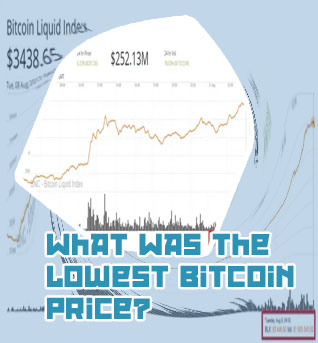
Bitcoin's affordability has always been a topic of interest for many investors and enthusiasts. Understanding how cheap Bitcoin was at certain points in time can provide valuable insights into its growth and potential future value. To help shed light on this topic, here are four articles that delve into the question of Bitcoin's affordability:
Exploring Bitcoin's Price History: How Cheap Was Bitcoin in its Early Days?
Bitcoin, the world's first decentralized cryptocurrency, has been making headlines for its meteoric rise in value over the past decade. But just how cheap was Bitcoin in its early days? Let's take a trip down memory lane and explore Bitcoin's price history.
Back in 2010, Bitcoin was virtually worthless, with early adopters able to mine thousands of coins with just a few clicks of a button. In fact, on May 22, 2010, someone famously paid 10,000 bitcoins for two pizzas, which would be worth millions of dollars today.
As Bitcoin gained popularity, its price began to rise steadily. By December 2017, Bitcoin had reached an all-time high of nearly ,000 per coin. However, just a year later, the price had plummeted to around 5,000, highlighting the extreme volatility of the cryptocurrency market.
Despite its fluctuations, Bitcoin has proven to be a lucrative investment for many early adopters. Those who had the foresight to invest in Bitcoin when it was still in its infancy have reaped substantial rewards.
In conclusion, exploring Bitcoin's price history provides valuable insights into the potential for growth and volatility in the cryptocurrency market. By understanding the historical trends of Bitcoin's price, investors can make more informed decisions
Analyzing Bitcoin's Price Trends: Was Bitcoin Ever Considered Cheap?
Bitcoin, the world's most popular cryptocurrency, has been a subject of fascination and speculation since its inception in 2009. Over the years, its price has experienced extreme volatility, with dramatic fluctuations that have left investors both thrilled and anxious. But has Bitcoin ever been considered cheap?
-
Early Days: In the early days of Bitcoin, when it was first introduced to the world, its price was indeed considered cheap. Back in 2010, you could purchase a single Bitcoin for just a few cents. Many early adopters took advantage of this opportunity and bought large quantities of Bitcoin at rock-bottom prices.
-
Price Surges: As Bitcoin gained popularity and mainstream acceptance, its price started to soar. The cryptocurrency experienced several price surges, with its value reaching an all-time high of nearly ,000 in April 2021. During these periods of rapid growth, Bitcoin was far from being considered cheap, as its price skyrocketed to levels that seemed out of reach for many investors.
-
Market Corrections: Despite its meteoric rise, Bitcoin has also gone through significant market corrections, where its price tumbled sharply. These downturns provided opportunities for investors to buy Bitcoin at lower prices, making it more affordable for those looking to enter the market.
Comparing Bitcoin's Affordability: How Does it Stack Up Against Other Assets?
Bitcoin has become a buzzword in the world of finance, with many investors looking to capitalize on its potential for high returns. However, one key aspect that often gets overlooked is its affordability compared to other assets. When comparing Bitcoin's affordability to traditional investments such as stocks, bonds, and real estate, it is important to consider several factors.
-
Price per unit: One of the main differences between Bitcoin and other assets is the price per unit. While a single share of a blue-chip stock may cost hundreds of dollars, investors can purchase fractions of a Bitcoin for a much lower price.
-
Accessibility: Bitcoin offers a level of accessibility that is unmatched by traditional assets. Investors can buy, sell, and trade Bitcoin 24/7 from anywhere in the world, making it an attractive option for those looking to diversify their portfolios.
-
Volatility: One of the biggest drawbacks of investing in Bitcoin is its high volatility. While this can lead to significant gains, it also poses a higher risk compared to more stable assets like bonds or real estate.
-
Liquidity: Bitcoin is known for its high liquidity, meaning investors can easily convert their holdings into cash. This can be beneficial for those looking to quickly exit their positions or take advantage of short-term trading opportunities
Strategies for Investing in Bitcoin When It's Considered 'Cheap' or 'Expensive'
When it comes to investing in Bitcoin, timing is crucial. Many investors aim to buy Bitcoin when it is considered 'cheap' and sell when it is deemed 'expensive'. But how can one determine these points accurately?
One strategy for investing in Bitcoin when it is considered 'cheap' is dollar-cost averaging. This involves buying a fixed amount of Bitcoin at regular intervals, regardless of the price. This way, investors can take advantage of price fluctuations and lower their average cost per coin over time.
On the other hand, when Bitcoin is considered 'expensive', investors may opt for a more cautious approach. Setting stop-loss orders can help limit potential losses if the price drops suddenly. Additionally, diversifying one's portfolio with other assets can reduce the overall risk of investing in an expensive Bitcoin market.
Expert investor, Juan Morales from Madrid, suggests that investors should focus on the long-term potential of Bitcoin rather than short-term price fluctuations. Morales advises investors to do thorough research, stay informed about market trends, and seek professional advice when needed.
Feedback from a resident of Paris, France, Pierre Dubois, indicates that these strategies have been helpful in navigating the volatile Bitcoin market. Dubois emphasizes the importance of patience and discipline when investing in Bitcoin, regardless of whether it is considered 'cheap

